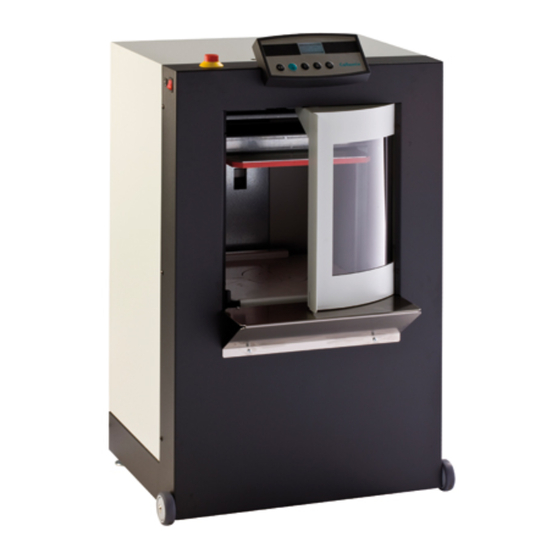
Summarization of Contents
Machine Components Overview
Machine Components
Identifies and labels the physical parts of the shaker.
Operating and Display Components
Control Panel and Buttons
Details the functions of the shaker's control panel buttons and display.
About This Document
Pictograms and Symbols Explained
Explains the meaning of warning symbols and signal words used throughout the manual.
Safety Information
General Safety Guidelines
Provides essential safety advice and instructions for using the shaker.
Intended Use of the Shaker
Defines the specified applications and materials suitable for the shaker.
Foreseeable Misuse and Personnel Qualifications
Improper Use Scenarios
Lists hazardous situations arising from using the shaker contrary to its intended purpose.
Required Operator Expertise
Specifies the necessary skills and training for personnel operating the equipment.
Safety Components and Residual Risks
Key Safety Features
Details critical safety components like the housing, door interlock, and emergency stop.
Understanding Residual Dangers
Highlights inherent risks that may persist even after implementing all safety measures.
Equipment Description and Initial Setup
Shaker Functionality Overview
Describes the shaker's purpose as a stationary mixing device for various containers.
Delivery Contents
Lists the items included in the shaker package upon delivery.
Machine Transport
Explains the procedure for moving the shaker using its built-in transport rollers.
Securing During Transport
Instructions for attaching the transport lock to secure the machine during transit.
Equipment Setup and Trial Run
Removing Transport Lock
Procedure for safely removing the transport securing belt before operation.
Setting Up the Machine
Guidance on positioning the shaker on a level surface and adjusting its legs.
Performing an Initial Trial Run
Steps for conducting a first test run with an empty container to verify functionality.
Machine Operation
Switching the Machine On
Instructions for powering up the shaker and initial display checks.
Loading a Container
Detailed steps for opening the door, adjusting the clamping plate, and placing containers.
Mixing Cycle Procedures
Starting the Mixing Process
Instructions for initiating the mixing cycle using designated control buttons.
Ending the Mixing Cycle
Describes automatic cycle completion and early termination options.
Emergency Stop Functionality
Details how to use the emergency stop button and reset the machine.
Troubleshooting Common Errors
Error Code Solutions
Provides a guide to identifying and resolving common error codes and machine issues.
Maintenance and Service Procedures
Manual Door Unlock
Procedure to manually open the machine door during malfunctions or power loss.
Cleaning Instructions
Guidelines for cleaning the shaker's interior and exterior surfaces safely.
Routine Maintenance Tasks
Outlines the regular maintenance checks and procedures required for the shaker.
Annual Maintenance Checklist
Details specific inspection and lubrication tasks for annual servicing.
30,000-Cycle Service Requirements
Specifies service intervals for critical components like drive belts and bearings.
Storage and Disposal Information
Proper Storage Conditions
Guidelines for storing the shaker to prevent damage and corrosion.
Machine Disposal Procedures
Instructions for environmentally responsible disposal of the shaker and packaging.
Available Accessories
Lists optional accessories compatible with the shaker, including article numbers.
Appendix and Technical Details
Technical Specifications Summary
Provides detailed technical data for AGIA 200, VIBA 300, and VIBA 330 models.
Warranty Information
Information regarding warranty terms and conditions for the shaker.








Need help?
Do you have a question about the VIBA 330 and is the answer not in the manual?
Questions and answers